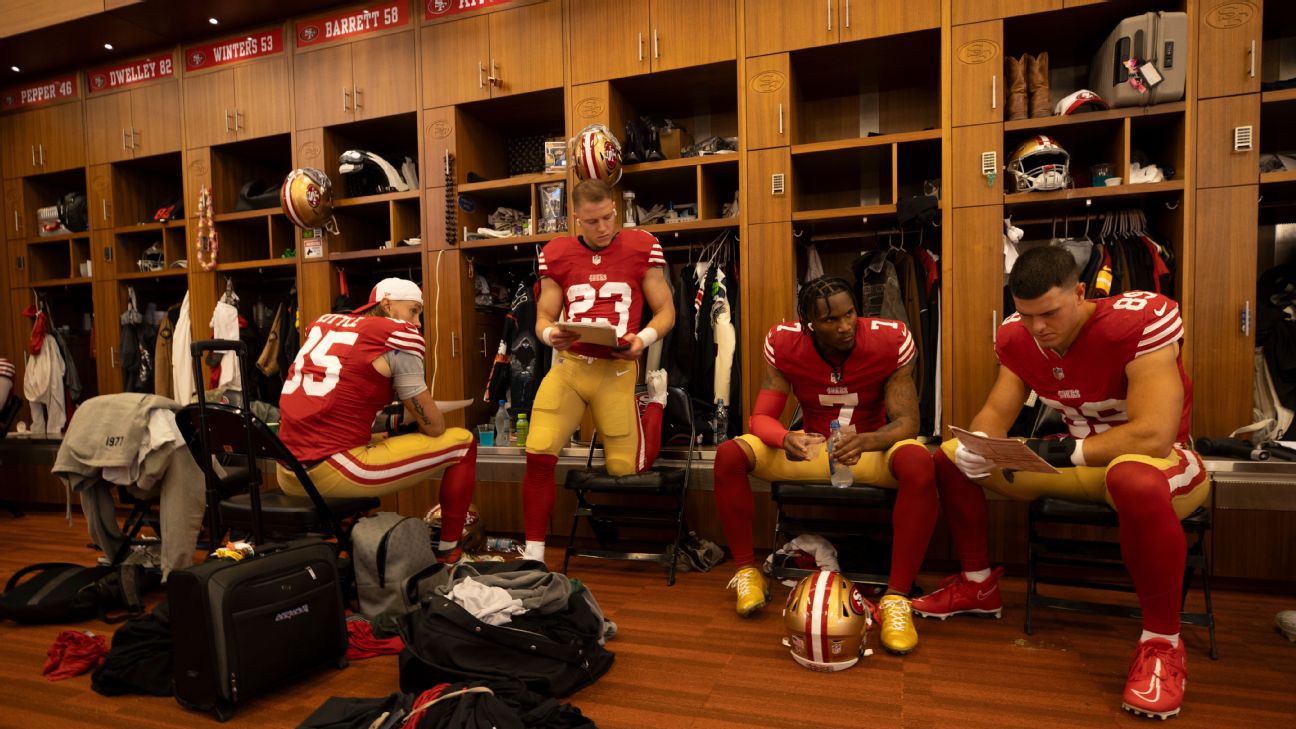Unlocking Success: The Strategic Role of NFL Locker Room Assignments in Player Development
Explore how NFL coaches strategically assign locker rooms to foster player development and team cohesion, enhancing on-field performance.

The Psychology Behind Locker Room Assignments
In the high-stakes environment of the NFL, every detail counts. Coaches are not just strategists on the field but also in the locker room. The placement of players within the locker room is a calculated move aimed at fostering mentorship, enhancing team dynamics, and ultimately, improving performance.
Mentorship in Close Quarters
Rookie quarterback Michael Penix Jr. found himself next to veteran safety Jessie Bates III in the Atlanta Falcons' locker room. This strategic placement allowed Penix to absorb invaluable insights from Bates, who is known for his meticulous film study and on-field intelligence.
Penix shared, "He's like, 'I just saw the receiver looking that way, or a certain technique or the way that we were running the routes,' and just small stuff like that. Because when he's back there lurking, he's able to do whatever he wants. It is scary for a quarterback."
Cross-Positional Interaction
Teams like the San Francisco 49ers eschew traditional position-group seating, opting instead to mix players from different units. This approach encourages cross-positional interaction, fostering a deeper understanding and appreciation among teammates.
49ers coach Kyle Shanahan explained, "I like to mix everything up, because you're always with your position groups, you're always in rooms with 'em. Position groups are always going to be tight. You don't get too many opportunities to cross over."
The Suburbs: A Hotspot for Veterans
In the Los Angeles Rams' locker room, a particular area known as "The suburbs" is reserved for seasoned veterans. Rookie defensive end Braden Fiske found himself rubbing elbows with Super Bowl winners like Matthew Stafford and Cooper Kupp, gaining insights that significantly impacted his offseason regimen.
Fiske noted, "Cooper was a big one last year that I would talk to. How did he make that jump in Year 2 of his career? What was something that elevated his game? And a lot of that was the diet. That's a lot of what I implemented into my offseason."
Strategic Leadership Placement
The Dallas Cowboys have long been strategic about locker locations, placing team leaders in corner spots to maximize their influence. New coach Brian Schottenheimer has continued this tradition, even placing star pass rusher Micah Parsons next to quarterback Dak Prescott to foster a competitive yet collaborative environment.
Schottenheimer said, "Two of our best players, put them together. There's also other things we're doing in there where guys are competing every day in different things that we've kind of put in there, but just they can challenge each other in a good way."
The Impact on Performance
While the direct impact of locker room assignments on game outcomes may be debatable, the psychological and developmental benefits are clear. Players like Penix have credited their locker room neighbors with helping them transition smoothly into their roles, proving that sometimes, success starts in the locker room.
Penix reflected, "I can break it down in so much detail, but I'll be talking forever."
Conclusion
The strategic assignment of locker rooms in the NFL is more than just a logistical decision; it's a psychological tool aimed at fostering mentorship, enhancing team cohesion, and ultimately, driving on-field success. As teams continue to seek every possible edge, the locker room remains a crucial, albeit often overlooked, component of the game.
















